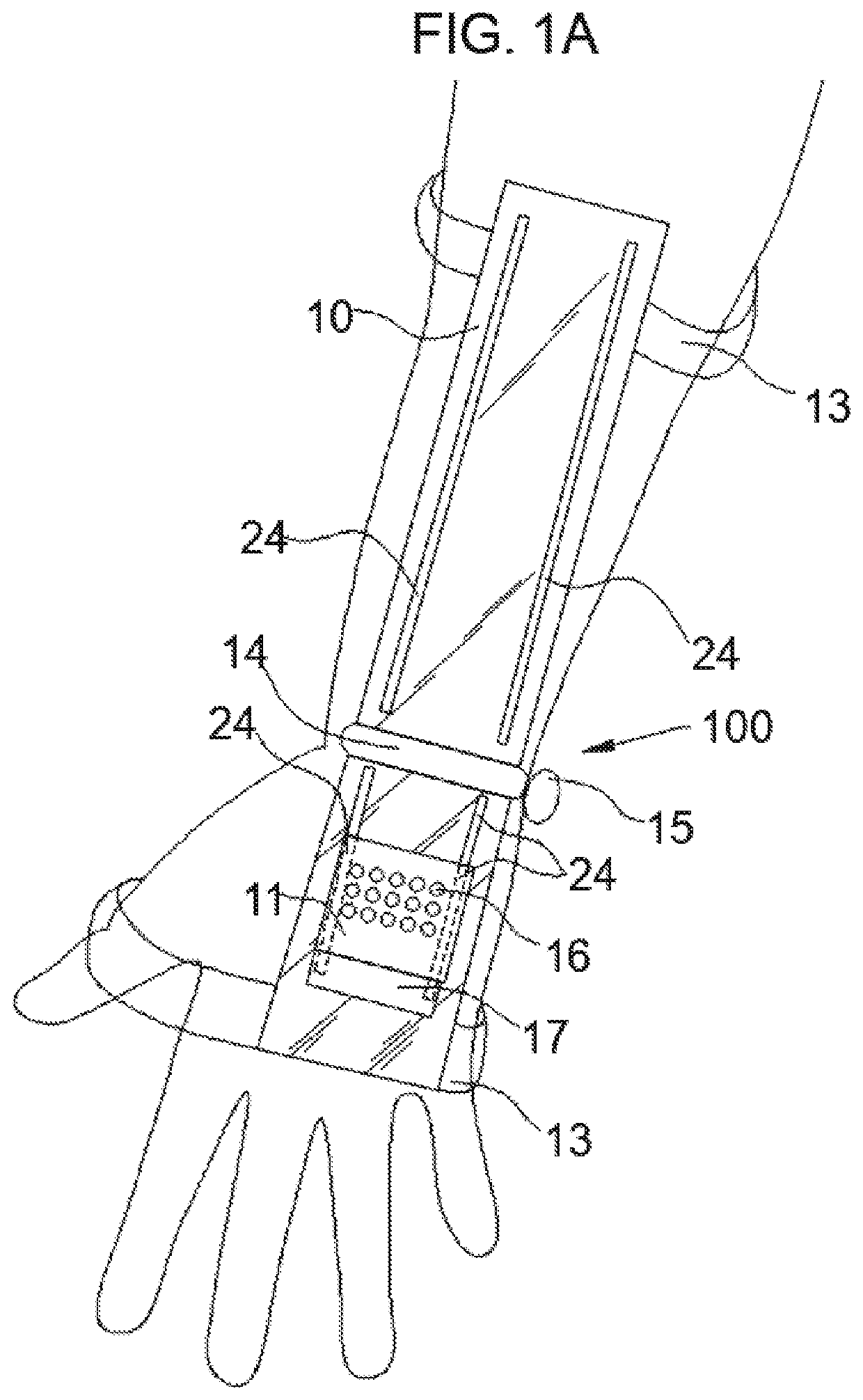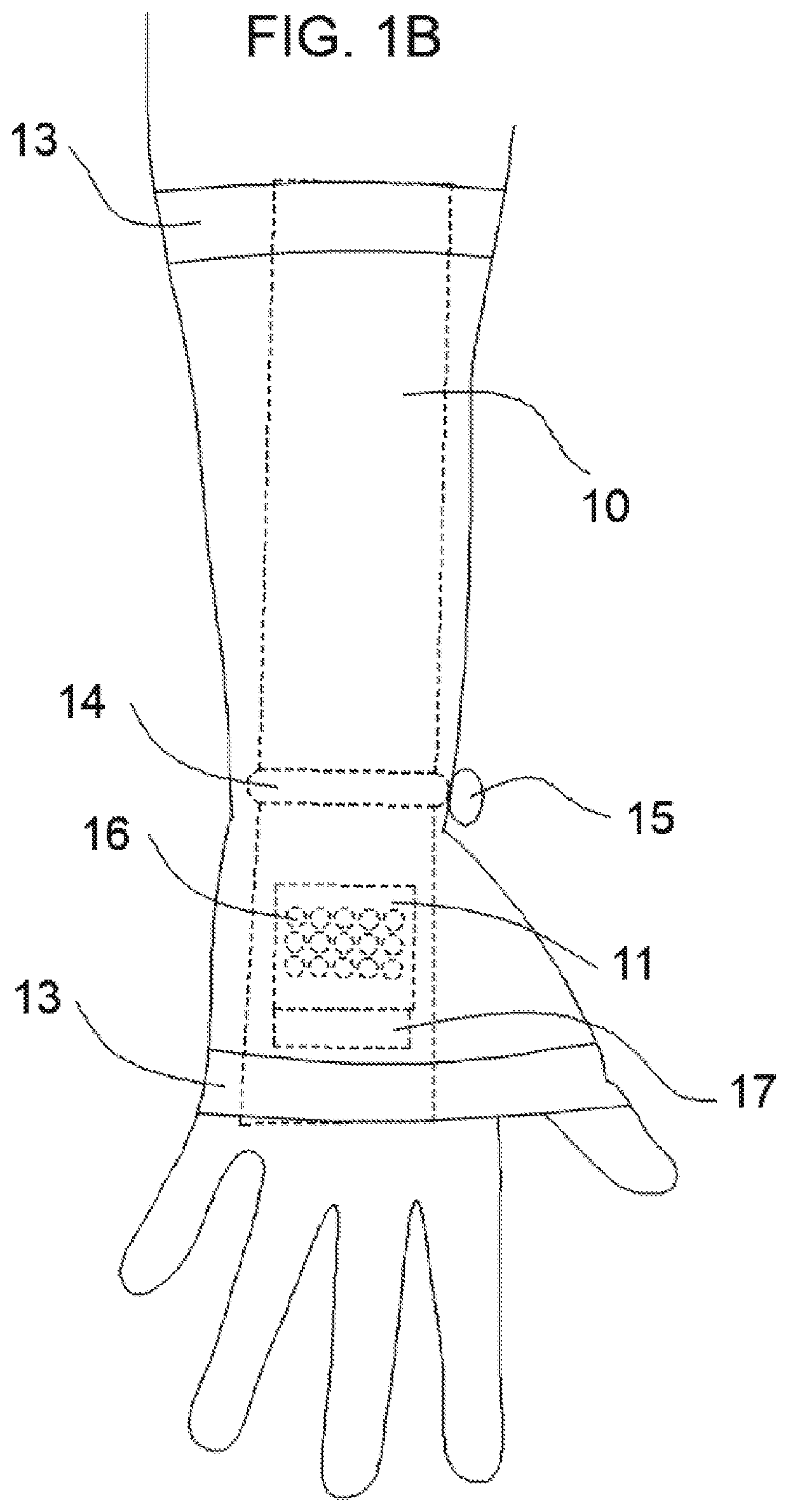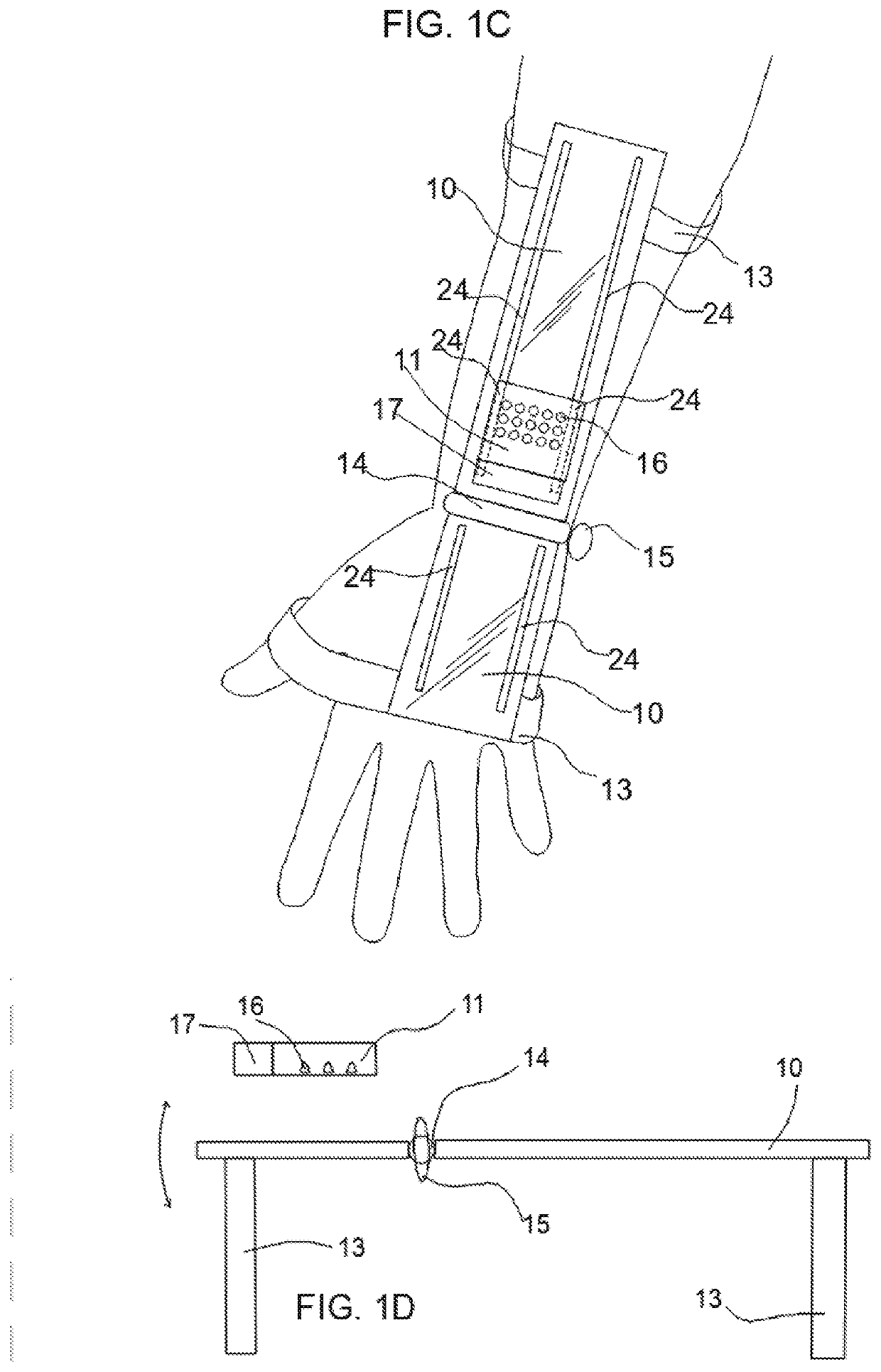Transilluminating Immobilizer for Intravenous and Intra-arterial procedures
- Summary
- Abstract
- Description
- Claims
- Application Information
AI Technical Summary
Benefits of technology
Problems solved by technology
Method used
Image
Examples
Embodiment Construction
A. General Information
[0045]The use of the terms “a,”“an,” and “the” and similar references in the context of this disclosure (especially in the context of the following claims) are to be construed to cover both the singular and the plural, unless otherwise indicated herein or clearly contradicted by context. All methods and individual method steps described herein can be performed in any suitable order or simultaneously, unless otherwise indicated herein or otherwise clearly contradicted by context. The use of any and all examples, or exemplary language (e.g., such as, preferred, preferably) provided herein, is intended merely to further illustrate the content of the disclosure and does not pose a limitation on the scope, or range of equivalents, to which the appended claims are entitled. No language in the specification should be construed as indicating any non-claimed element as essential to the practice of the present disclosure.
[0046]All references, including printed publicatio...
PUM
 Login to View More
Login to View More Abstract
Description
Claims
Application Information
 Login to View More
Login to View More - R&D
- Intellectual Property
- Life Sciences
- Materials
- Tech Scout
- Unparalleled Data Quality
- Higher Quality Content
- 60% Fewer Hallucinations
Browse by: Latest US Patents, China's latest patents, Technical Efficacy Thesaurus, Application Domain, Technology Topic, Popular Technical Reports.
© 2025 PatSnap. All rights reserved.Legal|Privacy policy|Modern Slavery Act Transparency Statement|Sitemap|About US| Contact US: help@patsnap.com



